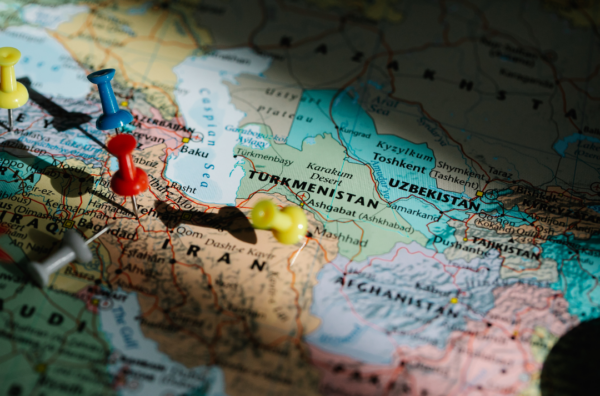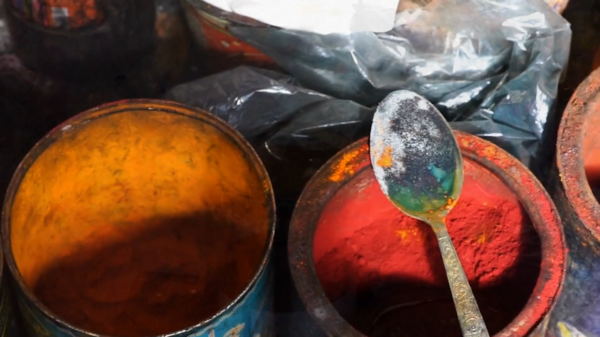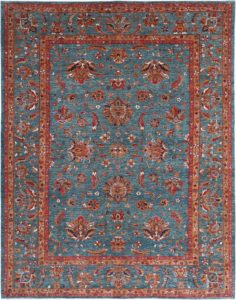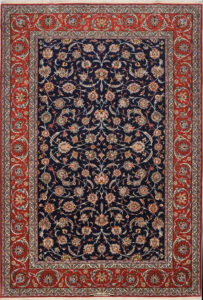For centuries, Persian rugs (also known as Iranian rugs) have captivated the world with their intricate designs, vibrant colors, and rich history. But did you know that a rug’s birthplace within Persia itself can significantly impact its creation?
This blog explores how geographic location shapes the artistry and cultural heritage woven into each Persian rug.
The Historical and Cultural Influence of Geographic Regions
Persia boasts a diverse landscape with distinct cultural traditions. These regional variations are evident in the art of rug weaving, creating various rug designs with a unique tapestry of styles across the country.
Key Rug-Producing Regions:
Tabriz: A historic trade hub, Tabriz rugs reflect a vibrant mix of artistic influences.
Kashan: Renowned for its classical elegance, Kashan rugs feature intricate floral motifs.
Isfahan: The former capital of the Safavid dynasty, Isfahan rugs are known for their exceptional craftsmanship and use of luxurious materials.
Nain: Famed for meticulous detail and a blue and white palette, Nain rugs represent the pinnacle of weaving precision.
The history, trade routes, and cultural exchanges that shaped these regions are woven into the very designs of their rugs.
Tabriz, a major Silk Road stop, incorporated diverse artistic influences. Kashan, a center of learning and artistry, developed its own refined style.
Isfahan, under royal patronage, saw the flourishing of elaborate designs and the use of precious materials.
Nain’s proximity to the royal court fostered a tradition of meticulous craftsmanship.
Persian Rug Design: Weaving Techniques and Material
Across Persia (modern-day Iran), the weaving technique and resulting knot density vary significantly. Beyond the vibrant colors lies a foundation of craftsmanship – the specific weaving techniques and materials employed by each region.
Let’s delve into the fascinating world of knots, knot density, and how they contribute to the distinctive styles of these treasured rugs.
The Art of the Knot: A Foundation for Finesse
Two primary knots reign supreme in Persian rug weaving:
Turkish Knot: This symmetrical knot offers faster weaving speeds but limits design detail.
Persian Knot: This asymmetrical knot, with its greater complexity, allows for finer details and more intricate patterns.
Knot Count: A Measure of Meticulousness
The number of knots per square inch (KPSI) serves as a key indicator of a rug’s intricacy and value. Generally, a higher knot count translates to finer details and a smoother surface feel.
Exploring Regional Techniques and Styles
Tabriz
Weaving Technique: Tabriz rugs often utilize both Turkish and Persian knots, offering versatility in design.
Knot Density: They boast high knot densities of 100 to 500 KPSI.
Signature Style: This combination allows Tabriz weavers to create a spectrum of designs, from intricate medallion designs to captivating scenes reflecting the city’s vibrant cultural heritage.
Kashan
Weaving Technique: Kashan prioritizes exceptional detail, favoring the intricate Persian knot.
Knot Density: Kashan rugs exhibit a wide range of knot counts, typically falling between 100 and 400 KPSI.
Signature Style: Renowned for their classical elegance, Kashan rugs are often characterized by a central medallion adorned with symmetrical floral arrangements. The meticulous Persian knotting technique allows for the creation of these stunning motifs with remarkable precision.
Isfahan
Weaving Technique: Similar to Kashan, Isfahan rugs primarily utilize the Persian knot to achieve intricate details.
Knot Density: Isfahan rugs typically fall within a knot count range of 200 to 600 KPSI. This focus on higher knot densities allows for the creation of remarkably detailed patterns.
Signature Style: Isfahan rugs are known for their intricate all-over patterns featuring stylized floral motifs. These captivating designs often showcase a wider range of colors compared to Kashan rugs.
Nain
Weaving Technique: Nain rugs take meticulousness to a new level, primarily using the Persian knot.
Knot Density: These rugs boast exceptionally high knot counts, starting at a remarkable 200 KPSI for standard pieces and reaching up to a staggering 600 KPSI or more.
Signature Style: Famed for their blue and white palette, Nain rugs feature a central medallion surrounded by breathtakingly intricate floral designs, all made possible by the incredible density of knots.
Oriental Rugs Material: Wool, Silk, and Cotton
The choice of materials further shapes the character of hand-knotted rugs. Here’s a deeper dive into the most common options, highlighting where they play their part in the rug’s construction:
Wool: The workhorse of rug-making, wool offers exceptional durability and warmth. It comes in various grades, with finer wools allowing for higher knot count and more intricate designs. However, wool can be susceptible to moth damage if not properly cared for. Wool is primarily used for the pile of the rug, the surface with the knots that create the design and texture.
Silk: For a luxurious feel and unmatched sheen, silk becomes the material of choice. Its smooth texture allows weavers to create incredibly fine details and intricate patterns. However, silk is more delicate than a sheep wool and requires extra care. Silk can be used for the pile, creating a luxurious feel and finer details. It can also be used in the warp and weft threads, though this is less common due to its cost.
Cotton: When a lighter texture and affordability are priorities, cotton is often used as the foundation (warp and weft) of the rug. It provides stability and structure for the pile (the knots that create the rug’s surface) made from wool or silk. Cotton forms the foundation of the rug, the warp and weft threads that hold the pile knots in place.
Dyes and Colors of Persian Carpets
For centuries, natural dyes derived from plants, insects, and even minerals formed the foundation of the Persian rug maker’s palette. Unlike their synthetic counterparts, these dyes offered a range of benefits:
Subtle Nuance: Natural dyes create a rich, yet subtle, color palette. The variations in tones add depth and complexity to the rug’s design, unlike the often harsh uniformity of synthetic dyes.
Colorfastness: Over time, natural dyes tend to mature gracefully, developing a beautiful patina that enhances the rug’s character. Synthetic dyes, on the other hand, can fade or bleed, compromising the rug’s aesthetics.
Environmental Friendliness: Natural dyes are derived from renewable resources and pose minimal threat to the environment.
A Glimpse into the Natural Dye Palette
Reds: From fiery crimson to deep burgundy, the mastery of red dyes was a hallmark of Persian rug making. Madder root, a flowering plant, and cochineal beetles were prized sources for this vital color.
Blues: The cornerstone of blue dyes was the indigo plant, offering a deep and reliable blue hue. Woad leaves served as a substitute, and some regions even employed lapis lazuli, a semi-precious stone, for the most vibrant blues.
Yellows: Saffron, the world’s most expensive spice, lent its luxurious character to yellow dyes. Weld and pomegranate rinds provided more affordable alternatives.
Greens: Creating green with natural dyes proved particularly challenging. Often, skilled artisans overdyed a yellow base with blue dye, or used green plants that, unfortunately, tended to fade with time.
A Tapestry Woven by Region
The natural bounty of each region played a significant role in shaping the characteristic color palettes of Persian rugs.
Tabriz: As a major trade center, Tabriz boasted a wider variety of dye materials, resulting in bolder and more diverse color palettes.
Kashan: The readily available flora provided the foundation for Kashan’s characteristic range of blues and reds.
Isfahan: Royal patronage in Isfahan allowed access to a wider range of expensive dyes, resulting in a more diverse range of colors.
Nain: The distinctive blue and white color scheme of Nain rugs is greatly influenced by the availability of cobalt blue dye, a mineral-based pigment known for its exceptional depth and colorfastness.
While synthetic dyes have become more prevalent in some areas for affordability and wider color options, the allure of natural dyes remains undeniable. Their timeless beauty and connection to the land continue to be a cherished aspect of the art of Persian rug making.
Conclusion
The geographic origin of a Persian rug has a profound impact on its design, exquisite craftsmanship, and cultural significance. From historical influences to the unique selection of high quality materials and dyes employed, each rug tells a story specific to its place of birth.
It’s crucial to preserve these traditional crafts and their rich cultural heritage. By appreciating the artistry and legacy woven into these handmade rugs, we ensure that this exquisite tradition continues to thrive. Understanding the interplay between material, design, the art of dyeing, and weaving techniques, we gain a deeper appreciation for the artistry woven into every Oriental rug.















